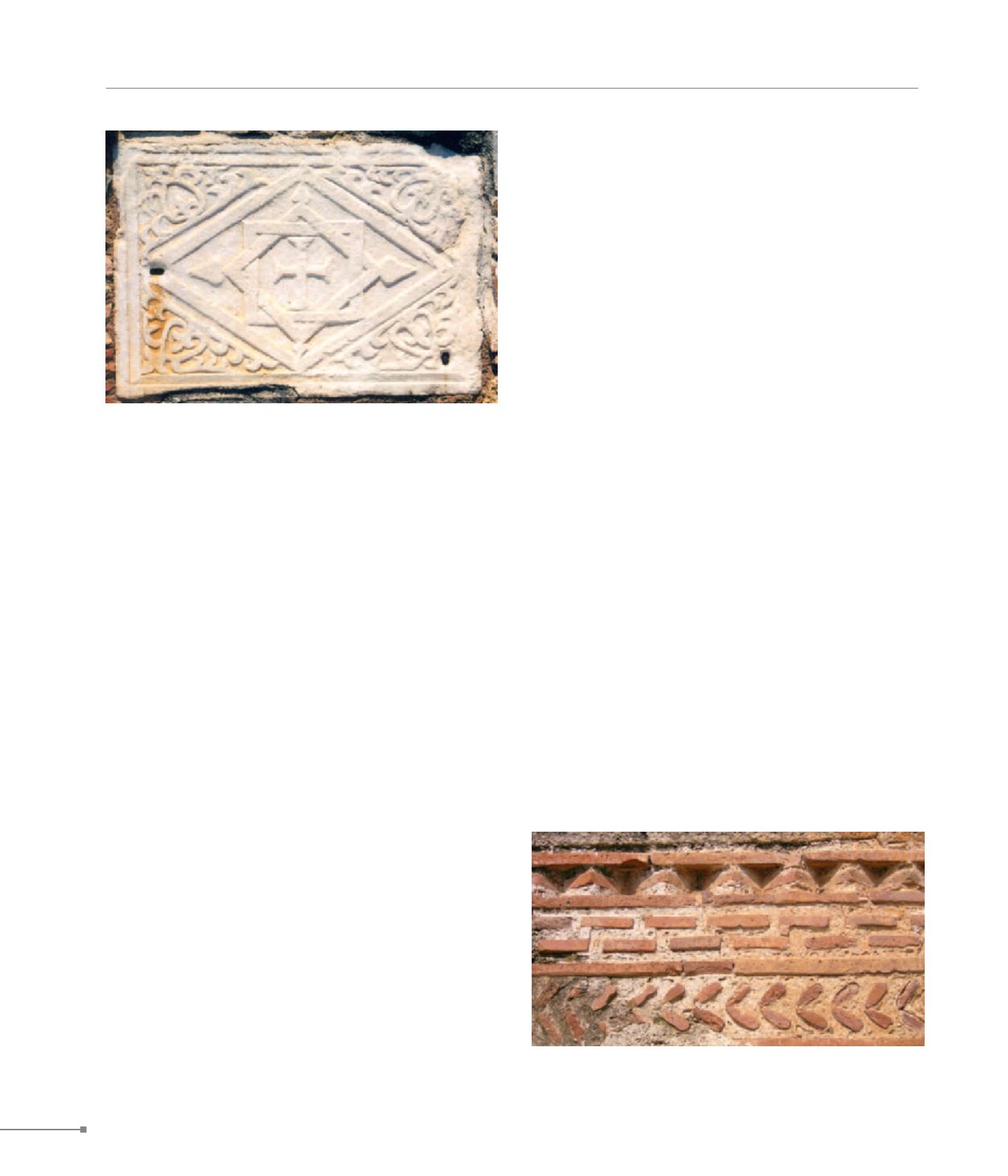
Karystos (Carystus)
Gymno.
EUBOEA
172
194. Ano Vatheia, Koimesis of the Theotokos, closure slab (Άνω Βάθεια,
Κοίμηση της Θεοτόκου, θωράκιο)
195. Gymno, Saint George, brick ornaments (Γυμνό, Άγιος Γεώργιος,
κεραμοπλαστικά)
191.
Karystos (Carystus)
Ancient and Byzantine Carystus stretched N of the present-day
city, to modern Palaiochora, where remnants attest to its inter-
mittent inhabitation. Close to the church of the Metamorphosis
there survives, among other ruins, a large, secular Late Roman
complex. Other Early Christian remains are indicated at Aghia
Paraskevi in Paximadi; on Kokkales hill NW of Palaiochora; at
Aghios Panteleimon in Drymonia; at the churches of Zoodochos
Pege in Kastri; within the enclosure of Saint John Prodromos in
Myloi; graves have also been in the region. From Zoodochos
Pege monastery in Karystos, which was active in the Byzantine
period, only ruins survive, indicating that the catholicon was a
three-aisled basilica.
On the hill of the ancient acropolis, near the village of Myloi, the
Lombard Ravano dalle Carceri built the so-called Castello Ros-
so in the years 1207-16, a castle with masonry and a ground
plan typical of the era of Frankish rule and a series of phases
associated with the succession of suzerains. It comprises an
outer and inner enclosure, a polygonal tower, a two-storey
building, which was the sovereign’s residence, and other struc-
tures for the guards and the needs of the castle. Near the E end
of the port stands the fortress of Bourtzi, with numerous ancient
spolia in its masonry, built by the Venetians towards the end
of the 14th c. Moreover, inhabitation at coastal sites during the
Early Christian and Byzantine periods has been documented
(Aghia Pelagia promontory, Mnema, Bouros, Petalioi islands).
At the site of Chartzani the ruins of a tower survive.
192.
Styra.
On Diakofti hill, SE of Styra, at the site of the ancient acropolis
is the fortress of Armenoi, in use during the Late Byzantine
period.
193.
Amarynthos.
Earlier rescue excavations have yielded the foundations of an
apse, possibly of an Early Christian basilica, graves, as well as
architectural sculptures. On Palaiochora hill, E of the town, sur-
vive two Late Byzantine cross-vaulted churches, the Koimesis
of the Theotokos and the Metamorphosis.
194.
Ano Vatheia.
The cross-vaulted church of the Koimesis of the Theotokos
(Panagitsa) stands on a hill, featuring masonry of large marble
and porous ashlars, reused sculptures, as well as a variety of
decorative brick ornaments. The graffito on the S door of the
church with the date 1310-11 possibly refers to the year of its
establishment.
195.
Gymno.
NE of the village stands the cross-vaulted church of Saint
George, of the late 13th or early 14th c. Its façades are adorned
with ancient spolia and decorative brick ornaments. Near the
parish church of the Koimesis of the Theotokos, in the NW of
Gymno, a Late Byzantine tower survives. On the road to Seta is
the aisleless, timber-roofed church of Zoodochos Pege (Agia),
which was originally Byzantine and cross-vaulted.


